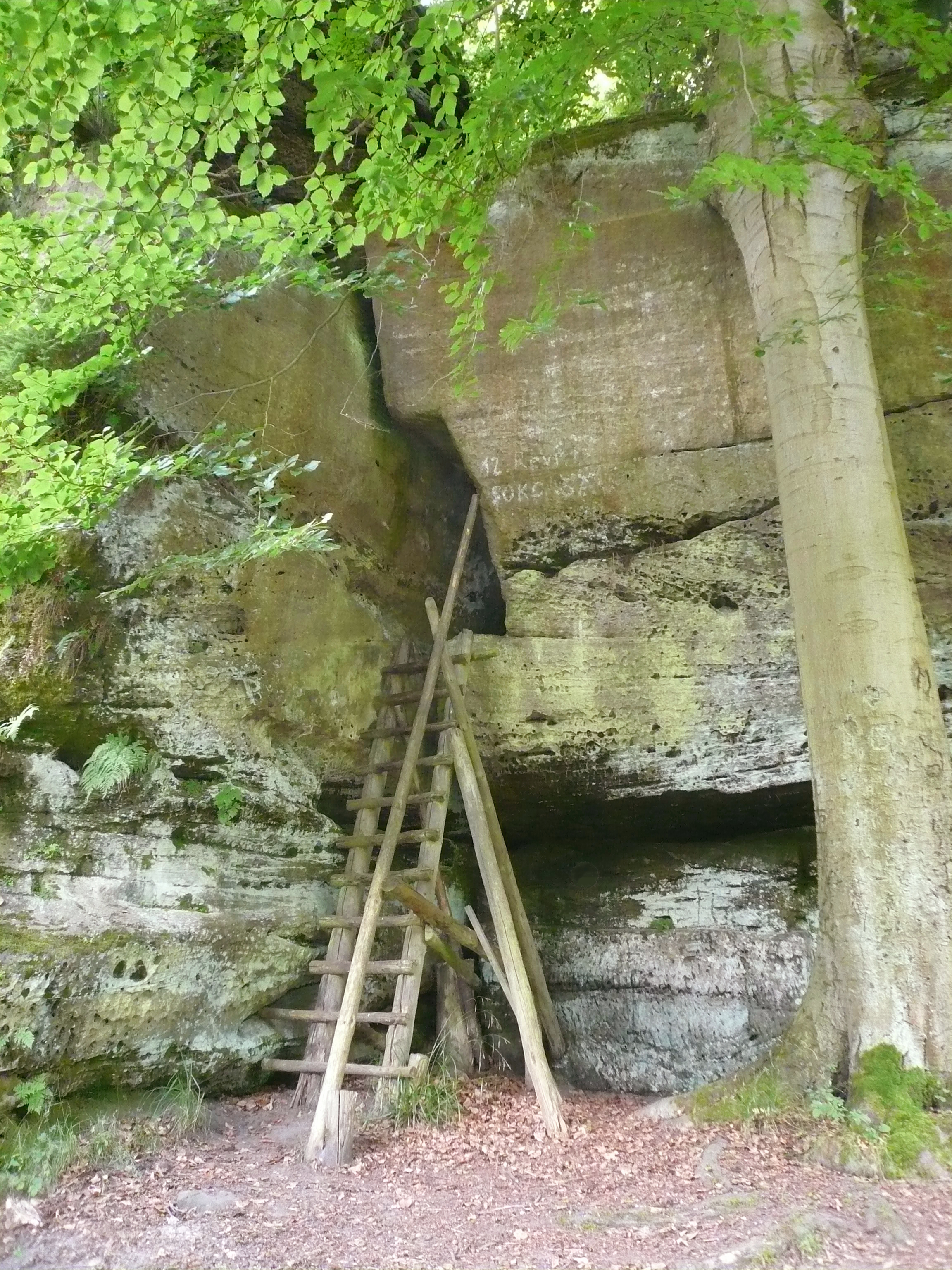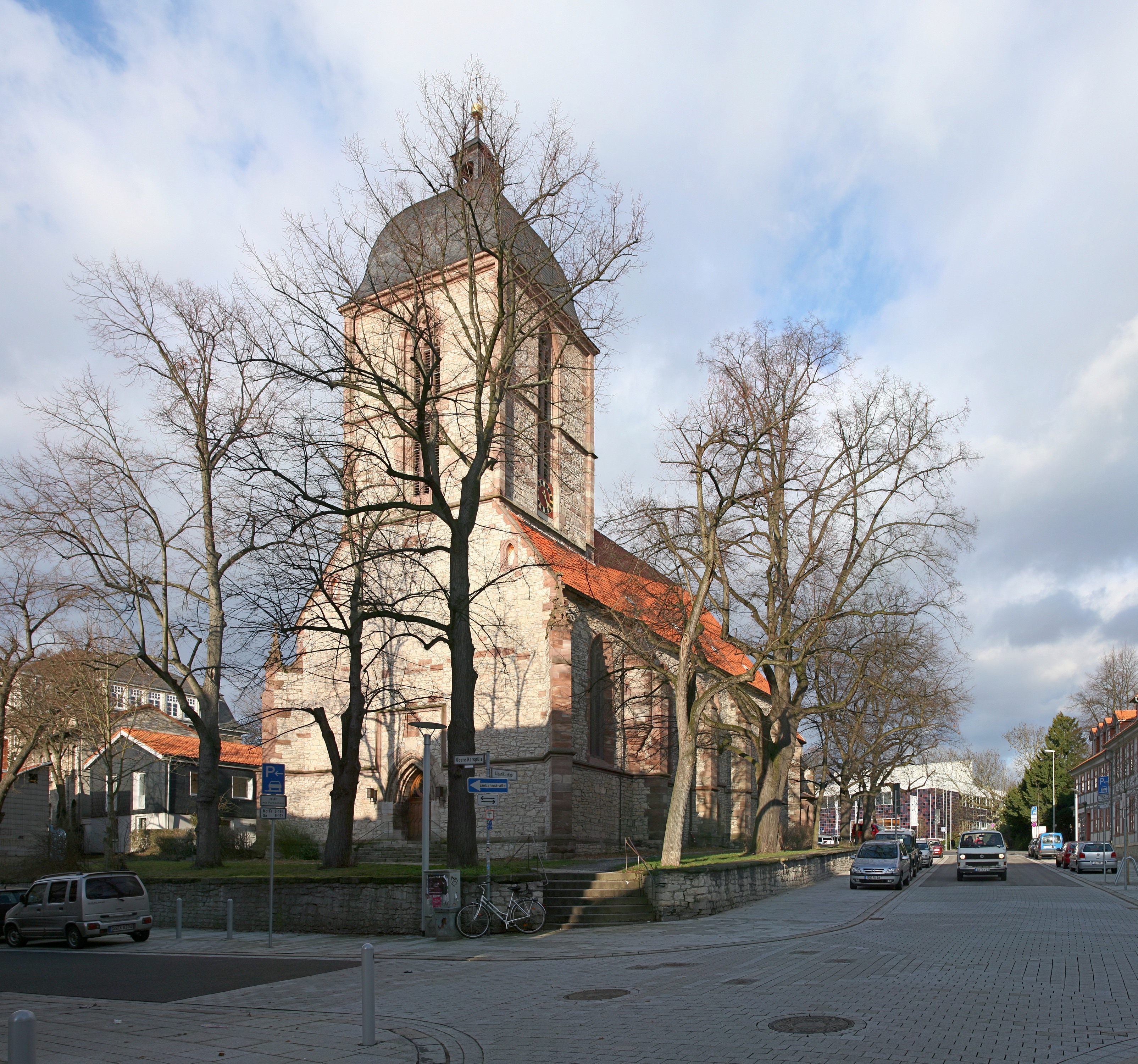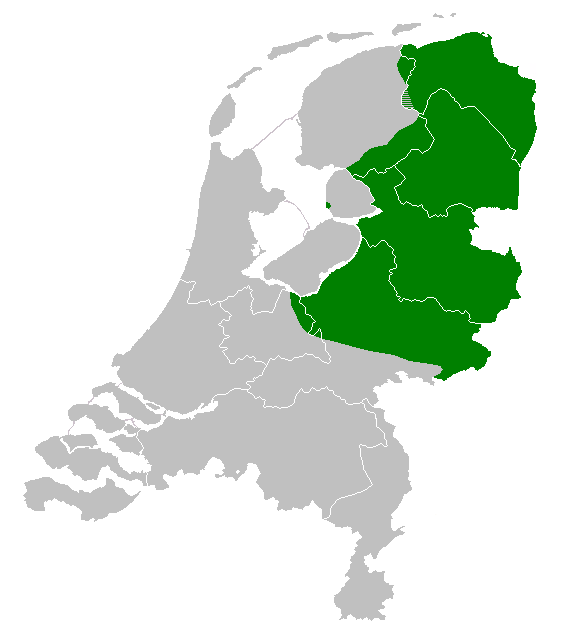|
Weißenborn (Gleichen)
Weißenborn is a village in the municipality Gleichen, Lower Saxony, Gleichen (Göttingen (district), district of Göttingen), east of the city of Göttingen, Germany and between Bischhausen and Glasenhausen, near the border of Thuringia. The population is about 260 people. The Garte creek originates in the village. In addition to High German, the Elbe Eastphalian dialect, Eastphalian dialect of West Low German is spoken in the town. The mayor is Friedrich Ehbrecht. There is one church, the Lutheran Nicolaikirche. Social and cultural activities Sports In 1921, the SV Fürth Weißenborn was founded. After a wartime interruption, it was re-juvenated, only to undergo some ups and downs, including a merger in 1968 to form SV Bischhausen/Weißenborn. Soccer, though the original sport of the club, has declined in interest. Hiking and gymnastics are actively pursued these days. The club has a club-house in Weißenborn. Schützenverein The village has an active Schützenverein ... [...More Info...] [...Related Items...] OR: [Wikipedia] [Google] [Baidu] |
DEU Weissenborn (Garte) COA
DEU may refer to: *Deutsche Eislauf-Union, the figure skating governing body in Germany *''Diccionario del español del Uruguay'', the Dictionary of Uruguayan Spanish *Distinctive environmental uniform, the current Uniforms of the Canadian Forces#distinctive environmental uniforms, uniform of the Canadian Forces, adopted in the late 1980s *Doom Editing Utility, a software utility for the computer game Doom * The ISO 3166-1 alpha-3 country code for Germany (German ''Deutschland'') * The ISO 639-2 (T) and ISO 639-3 code for Standard German * Drug Enforcement Unit, a specialised police unit *Dokuz Eylül University, a state university located in Izmir, Turkey {{disambiguation ... [...More Info...] [...Related Items...] OR: [Wikipedia] [Google] [Baidu] |
Gleichen, Lower Saxony
Gleichen () is a municipality (in this case, a ''Gemeinde (Germany), Gemeinde'') in the Göttingen (district), district of Göttingen, in Lower Saxony, Germany. Named after the two castles, Neuen-Gleichen and Alten-Gleichen on the twin peaks in the ''Gemeinde'', it is situated about 10 km southeast of Göttingen, from which the peaks are visible. Its seat is Reinhausen. Location The municipality of Gleichen is located southeast of Göttingen, west-southwest of Duderstadt and north-northwest of Heilbad Heiligenstadt. The River Garte flows through several of the villages in the municipality, as does the small Wendebach stream, which is impounded by the Wendebach Reservoir. Both streams are right, eastern tributaries of the Leine. In the center of the municipality are Die Gleichen, a pair of hills 430 m high, that rise between Appenrode, Bettenrode and Gelliehausen. Both hills were once crowned by castles, whose ruins may still be seen. The villages in the municipality ... [...More Info...] [...Related Items...] OR: [Wikipedia] [Google] [Baidu] |
Göttingen (district)
Göttingen () is a districts of Germany, district () in Lower Saxony, Germany. It is bounded by (from the northwest and clockwise) the districts of Northeim (district), Northeim and Goslar (district), Goslar, and by the states of Thuringia (district of Eichsfeld (district), Eichsfeld) and Hesse (districts of Werra-Meißner and Kassel (district), Kassel, and the district-free city of Kassel). The capital is the university city of Göttingen. History In 1885 the Prussian government established the districts of Göttingen, Münden and Duderstadt within the Province of Hanover. These districts existed for 88 years, before they were merged in 1973 to form the present district of Göttingen. In 1964, the formerly district-free Göttingen city was incorporated into the district. On 1 November 2016, it was reformed by the addition of the former Osterode (district), district of Osterode. Geography The western half of the district is occupied by the Weserbergland mountains. The Weser Ri ... [...More Info...] [...Related Items...] OR: [Wikipedia] [Google] [Baidu] |
Göttingen
Göttingen (, ; ; ) is a college town, university city in Lower Saxony, central Germany, the Capital (political), capital of Göttingen (district), the eponymous district. The River Leine runs through it. According to the 2022 German census, the population of Göttingen was 124,548. Overview The origins of Göttingen lay in a village called ''Gutingi, ''first mentioned in a document in 953 AD. The city was founded northwest of this village, between 1150 and 1200 AD, and adopted its name. In Middle Ages, medieval times the city was a member of the Hanseatic League and hence a wealthy town. Today, Göttingen is famous for its old university (''Georgia Augusta'', or University of Göttingen, "Georg-August-Universität"), which was founded in 1734 (first classes in 1737) and became the most visited university of Europe. In 1837, seven professors protested against the absolute sovereignty of the House of Hanover, kings of Kingdom of Hanover, Hanover; they lost their positions, but ... [...More Info...] [...Related Items...] OR: [Wikipedia] [Google] [Baidu] |
Germany
Germany, officially the Federal Republic of Germany, is a country in Central Europe. It lies between the Baltic Sea and the North Sea to the north and the Alps to the south. Its sixteen States of Germany, constituent states have a total population of over 84 million in an area of , making it the most populous member state of the European Union. It borders Denmark to the north, Poland and the Czech Republic to the east, Austria and Switzerland to the south, and France, Luxembourg, Belgium, and the Netherlands to the west. The Capital of Germany, nation's capital and List of cities in Germany by population, most populous city is Berlin and its main financial centre is Frankfurt; the largest urban area is the Ruhr. Settlement in the territory of modern Germany began in the Lower Paleolithic, with various tribes inhabiting it from the Neolithic onward, chiefly the Celts. Various Germanic peoples, Germanic tribes have inhabited the northern parts of modern Germany since classical ... [...More Info...] [...Related Items...] OR: [Wikipedia] [Google] [Baidu] |
Bischhausen
Bischhausen is a village in the Gemeinde Gleichen in southern Lower Saxony with a population of 326 (as of 1 January 2024https://www.gleichen.de/portal/seiten/doerfer-in-gleichen-wappen-der-gemeinde-gleichen-900000010-25460.html). The village is located close to the previous border with what was the GDR and near the peaks called the Gleichen, with their castle ruins. It consists almost entirely of residences - primarily those of farmer families and of commuters to Göttingen. In addition, there is a very small village pond and the Lutheran church of St. Martin with its Late Gothic wooden sculpture. The first mention of the community was in 1152, when it was referred to as Biscopenhusen, "Bishop's houses." The church was built in 1740–42 under the direction of master builder Jost Philipp. In 1971, as part of administrative re-districting, the village was made part of the ''Gemeinde'' Gleichen. [...More Info...] [...Related Items...] OR: [Wikipedia] [Google] [Baidu] |
Garte
The Garte is a small tributary to the Leine River in Lower Saxony, Germany. The Garte is a long stream that rises to the east of Weißenborn at an elevation of . Towns that it runs through or by include Beienrode, Kerstlingerode, Rittmarshausen (where it is joined by the Bernsroder Bach), Wöllmarshausen, Benniehausen (where the Bischhäuser Bach joins it), Klein Lengden (where the Bramke and Eichbach join it), and Diemarden. The stream joins the Leine River south of Göttingen. With a drop of 151 m, the stream averages a bed slope of 6.6‰. The watershed is . It is classified as a third-order (i.e., lowest :de:Flussordnungszahl) stream according to the German system of body-of-water ranking. The river valley is considered locally as something of a micro-cultural unit, especially solidified by the now-defunct Garte Valley Railway, a 750 mm narrow-gauge railway running from Göttingen to Duderstadt. Tributaries from source to mouth * (unnamed stream, from Weiß ... [...More Info...] [...Related Items...] OR: [Wikipedia] [Google] [Baidu] |
High German
The High German languages (, i.e. ''High German dialects''), or simply High German ( ) – not to be confused with Standard High German which is commonly also called "High German" – comprise the varieties of German spoken south of the Benrath and Uerdingen isoglosses, i.e., in central and southern Germany, Austria, Liechtenstein, Switzerland, Luxembourg, and eastern Belgium, as well as in neighbouring portions of France (Alsace and northern Lorraine), Italy ( South Tyrol), the Czech Republic (Bohemia), and Poland ( Upper Silesia). They are also spoken in diasporas in Romania, Russia, Canada, the United States, Brazil, Argentina, Mexico, Chile, and Namibia. High German is marked by the High German consonant shift, separating it from Low German (Low Saxon) and Low Franconian (including Dutch) within the continental West Germanic dialect continuum. "Low" and "high" refer to the lowland and highland geographies typically found in the two areas. Classification As a tech ... [...More Info...] [...Related Items...] OR: [Wikipedia] [Google] [Baidu] |
Eastphalian Dialect
Eastphalian, or Eastfalian (, Eastphalian and Low Saxon: ''ostfälsch Platt''), is a Low German language spoken in southeastern parts of Lower Saxony and western parts of Saxony-Anhalt in Germany. Geographical extent The language area between the Weser and Elbe rivers stretches from the Lüneburg Heath in the north to the Harz mountain range and Weser Uplands in the south. It comprises the Hanover Region, Brunswick and Calenberg Land as well as the Magdeburg Börde, including the cities of Hanover, Braunschweig, Hildesheim, Göttingen and Magdeburg. It roughly corresponds with the historic region of Eastphalia. Classification Eastphalian as a separate dialect was determined by 19th century linguistics, tracing it back to Old Saxon variants spoken in eastern parts of the medieval stem duchy of Saxony. Towards the Elbe region in the southeast, the language area is increasingly influenced by the High German consonant shift. Features The most prominent characteristic in Eastpha ... [...More Info...] [...Related Items...] OR: [Wikipedia] [Google] [Baidu] |
West Low German
Low Saxon (), also known as West Low German () are a group of Low German dialects spoken in parts of the Netherlands, northwestern Germany and southern Denmark (in North Schleswig by parts of the German-speaking minority). It is one of two dialect groups, the other being East Low German. Extent The language area comprises the North German states of Lower Saxony, North Rhine-Westphalia (the Westphalian part), Bremen, Hamburg, Schleswig-Holstein and Saxony-Anhalt (the northwestern areas around Magdeburg) as well as the northeast of the Netherlands (i.e. Dutch Low Saxon, spoken in Groningen, Drenthe, Overijssel, northern Gelderland and Urk) and the Schleswigsch dialect spoken by the North Schleswig Germans in the southernmost part of Denmark. In the south the Benrath line and Uerdingen line isoglosses form the border with the area, where West Central German variants of High German are spoken. List of dialects Germany *West Low German ** Westphalian, including the r ... [...More Info...] [...Related Items...] OR: [Wikipedia] [Google] [Baidu] |
Schützenverein
A Schützenverein (German for "marksmen's club") is a local voluntary association found in German-speaking countries revolving around shooting as a sport, often target shooting to Olympic rules or with historic weapons. Although originating as a town militia, a Schützenverein has no military aspects and in many cases often has a more social than sporting purpose. Origins These associations originated in late medieval autonomous towns as a form of citizens' militia principally to defend the town. Germany Germany has over 15,000 ''Schützenvereine'', with most of them affiliated to the "Deutscher Schützenbund" (German Marksmen's Federation, DSB) umbrella organization. The DSB was founded in 1861 in Gotha and revived in 1951 in Frankfurt am Main following World War II. The DSB's 1,500,000 members makes it the third largest sports organisation in Germany. Other organisations for sport shooting in Germany include the Bund Deutscher Sportschützen, "Bund der Militär- und Polize ... [...More Info...] [...Related Items...] OR: [Wikipedia] [Google] [Baidu] |



